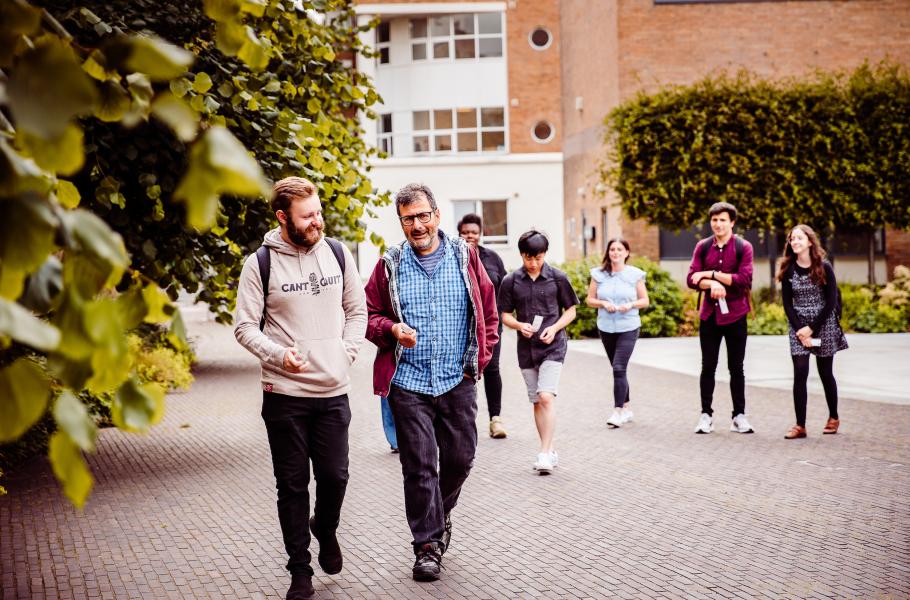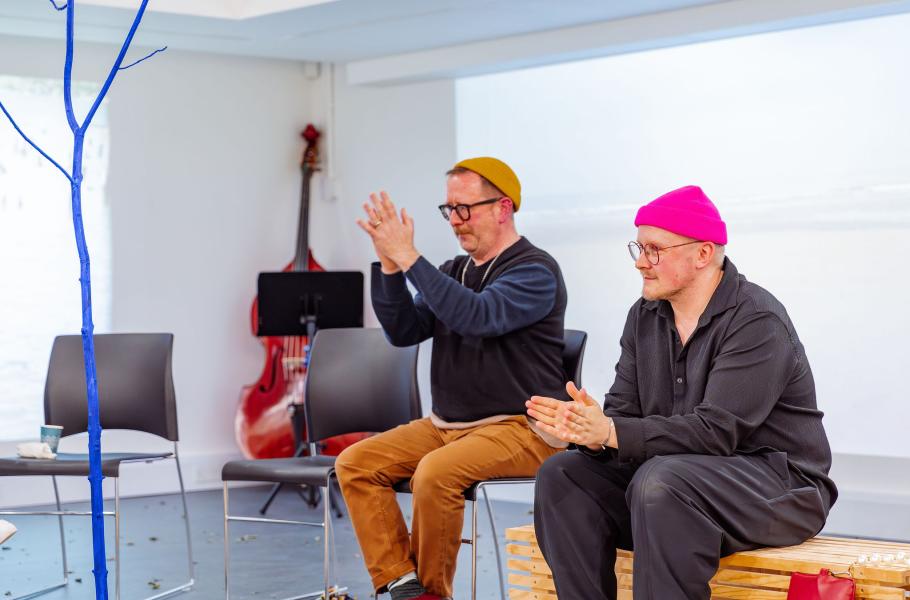In Conversation with...
Assistant Curator Danielle Ash and Associate Creative Producer Lauren Velvick were both new members of staff at Lancaster Arts when Covid-19 struck, and social isolation rules were put in place. Since Danni’s second week and Lauren’s third day they’ve been working from home at their new jobs, finding creative ways of working without meeting anyone face to face or stepping foot inside our arts venue. They can’t get to know each other over a mid-morning brew, so here’s a conversation taking place (as with everything at the moment) remotely…

LV: Where have you moved from and what were you doing before?
DA: I’ve moved up from London having completed my MFA Curating masters at Goldsmiths, University of London. I was going to exhibition openings, developing my independent curatorial practice and working as a Visitor Experience Assistant at the Wellcome Collection. It’s strange to think that such a short time ago I could simply walk into cultural institutions to enjoy great art.
DA: What exciting projects were you working on before joining the Lancaster Arts team?
LV: In the months before joining Lancaster Arts I’d taken a more hands on role with Corridor8, who I’ve been working for and with on and off in different ways since 2012. Corridor8 is a journal for writing and contemporary art focussed on the North of England that has been going now for a decade. We recently launched a new model where we ask organisations to fund us with some of their marketing or programme budget so that we can pay the writers that we commission as well as our editors - it sounds strange I know, but it means that organisations outside of art world circuits who might struggle for specialised coverage otherwise can have a writer who knows their stuff really put some time into considering the work on show, and so far nobody has been upset by our writers’ sometimes critical but always fair opinions!
LV: How do you curate without access to objects?
DA: It’s a challenge to answer this question without defining my stance on what it means to be a curator. What I will say is that the overused term ‘curator’ in the art world should not be limited to the act of displaying objects in a collection. Whilst this is an important aspect of the job, creatively thinking about objects beyond physical things - as catalysts to inspire new artforms, commissions and conversations - is what really excites me. I then co-facilitate the sharing of these non-object-based works, whether it be a durational performance, digital artwork or live-streamed discussion. Ultimately, the works and artists dictate how I might, ‘curate without access to objects’.
DA: What advice/reassurance/tips would you give to creative producers/professionals adapting to working from home?
LV: It’s such a strange time and things seem to change by the day so I’d mostly encourage everyone to be kind to themselves and patient with each other, but in terms of keeping projects moving and working out what to do about the new social distancing rules, I’ve found regular low-stakes check ins with my colleagues and other stakeholders to be really valuable. Trying to make decisions when you don’t know what’s coming can be really stressful, and it’s good to acknowledge that everyone is having a hard time (or at least a weird time) in different ways.
LV: What are your recommendations for websites and activities to get a cultural fix?
DA: I follow @v21artspace on Instagram because I love the way I can explore their 3D virtual exhibitions from home, anytime! Working with you to signpost useful content via our social media platforms, has revealed to me the wealth of resources currently on offer, a potential lifeline to those under extreme financial and emotional stress.
DA: Who is your cultural role model and why?
LV: There are a few different people I look up to for creative or organisational inspiration, but now being back in the north west, Lubaina Himid is a brilliant role model and a great artist. She’s based in Preston and won the Turner Prize in 2017. Before that I knew her as somebody who was always supportive of other artists and curators and is exemplary in using whatever power and privilege, she has to lift everyone up with her instead of pulling up the ladder behind her. This is one of the most important parts of cultural work for me.
LV: What are some of the most inspiring artistic responses that you’ve seen to the pandemic crisis?
DA: While Wellcome Collection’s on my mind, their resident artist, Rob Bidder creates a series of emotive comics titled Body Squabbles which can all be found here. His last three comics, entitled Isolation, Worries and Phone beautifully capture the collective hopes and fears of the globe. My hope is that once this battle has been defeated, arts professionals are kinder to themselves, and each other.
DA: What do you want to see the sector do more of once government rules are lifted?
LV: I think this crisis has really thrown into relief the differences in power and security between salaried staff at cultural institutions, and the many other people on casual or freelance contracts. This was already something that lots of people acknowledged as an issue, but just as in wider society, it’s become crystal clear that it’s the health workers, cleaners, posties, shop workers and public transport workers that we really can’t manage without. In the cultural industries we need to properly acknowledge that without artists and other creatives there’d be nothing to programme or produce!




